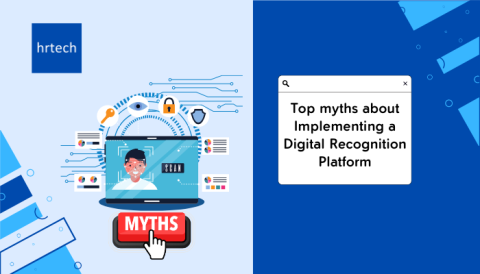When we got to the details as to how they (enterprises) manage the (compensation) programs, it’s often on a spread sheet with formulae and macros. No wonder it’s complex and cumbersome, let alone the errors and rounding issues as well as the multiple

Off late, I have been talking to many customers on their compensation programs that manages Bonuses and their Merit programs. Most of the time I hear them say, “our bonus is unique” or “it’s different” or “its complex” and so on. It made me wonder if there was a way to draw some outer boundaries, draw some parallels and tidy up the mess? Kind of solving the fear of the unknown. My attempt may be fruitful or an utter disaster, the opinions would say.
Let me attempt to lay out a different version. I don’t think it is a laundry list, but it’s a starting point.
Complexity Level: Simple
A Bonus Target driven by Job or Grade; a set percentage of Bonus tied to the Salary/Base/Pay. Manager has a discretion on the payout based on the employee performance, governed by a guideline from 50% to 150%
Pros: This model brings in uniformity of bonus by the type of job or grade; simple for configuring by Analysts; which works well for large organizations.
Cons: Not ideal for small and mid-size organization with dynamic work groups with multiple project deliverables.
Complexity Level: Simple (with variation)
A Bonus Target driven by Job or Grade; a set percentage of Bonus tied to the Salary/Base/Pay. Manager has a discretion on the payout based on the employee performance, governed by a guideline from 50% to 150%. The guideline is mostly tied to Performance Rating of the individual.
Pros: Similar to the above. Also, the other good news is that the employee knows the manager discretion reason.
Cons: Not ideal for small and mid-size organization with dynamic work groups with multiple project deliverables.
Complexity Level: Medium
A Bonus Target driven by Job or Grade; a set percentage of Bonus tied to the Salary/Base/Pay. The payout is controlled by two results: the Organizational performance and the Individual employee performance. Usually this is a ratio , for example 30:70 where 30% of payout is tied to the Organization performance and 70% to the individual performance.
What is Organization performance? While there may be many factors, however for simplicity, it’s the target achievement vs actual. If they meet the revenue target, its 100% payout. If they exceed, it may be 110% pay out; and if they fall shot it could be 90% payout. The manager discretion is only tied on the 70%
Complexity Level: Complex
A Bonus Target driven by Job or Grade; a set percentage of Bonus tied to the Salary/Base/Pay. The Target is broken down by different modifiershave seen as many as 4 to 5 different buckets. An example here would be EBITA (25%), Revenue (15%), Team Contribution (10%), Individual Contribution (50%), adding up to 100%.
Even though most of this is controlled at a corporate level and manager’s discretion is only on the individual employee component, it may be an overkill for the Manager. To add complexity, you now define multiple Bonus Plans that will have levels to adjust the payout of the modifiers. Some of the factors like Performance, Company results, and Employee Grade or Levels within the organizations make a huge impact on these payouts.
Now organizations come back and ask us if they can have a proposed/projected payout vs an actual payout, because many companies run their programs that do not align with their results. We simplify it by introducing multipliers as it affects the projections/proposals by a factor and the payouts can be auto calculated.
This model fits well for smaller organizations, where you want a level of high transparency. It develops a clear picture for each employee as to where the money is coming from and how the organization performed for that financial year. Also, a peer comparison and department comparisons motivate them.
Finally, when we got to the details as to how they managed the programs. Most often, it’s on a spread sheet with formulae and macros! No wonder it’s complex and cumbersome, let alone the errors and rounding issues as well as the multiple versions that haunt them.
And that’s where Laserbeam Software comes to the rescue. Our Compass Compensation and Analytics family of products is designed to support and extend the value of the employee compensation process from modeling Salary and Bonus programs to Total Compensation Statements. Planning, modeling, administering and recommending increases are all done on a single platform. Compensation analysts can build different budgets driven by Compa-ratio or other modeling parameters, compare budgets and freeze budgets after approval process. HR business partners can roll out the different Merit and Bonus programs for managers to recommend. Laserbeam is simplified and easy-to-use to help complete the compensation cycle in a breeze.
About the author :

Naveen Veda is a specialist in the compensation and performance management domain. He has over two decades of experience in talent management industry, starting from his early days of working in Bank of America, USA, where he was instrumental in implementing their global compensation system. LinkedIn



